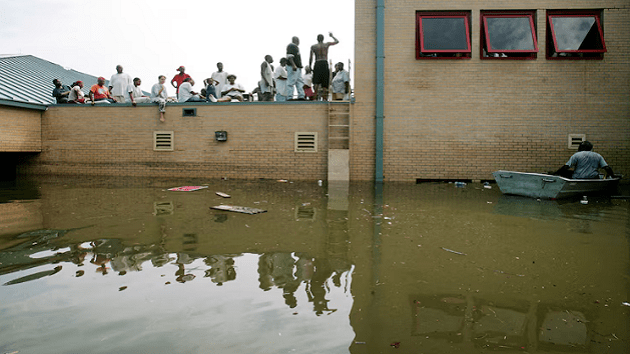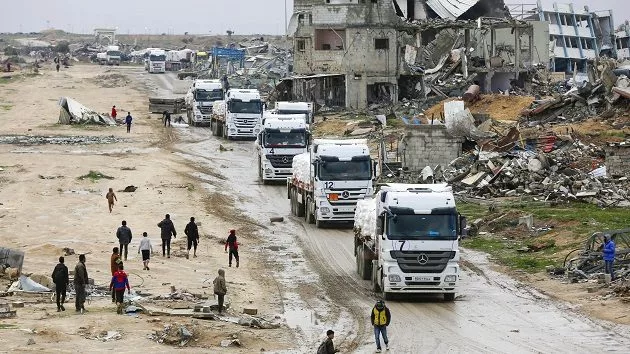
(BRAZIL) — “It is absolutely, absurdly, extraordinarily serious what is happening in Rio Grande do Sul right now — and unfortunately, it will get worse,” Brazilian state governor Eduardo Leite said during a press conference at the onset of what has become the most severe climate catastrophe to impact the region.
Persistent rains and destructive flooding in the southern Brazilian state have left 150 people dead, 2.1 million affected, 620,000 residents displaced and 807 people injured, according to civil defense officials.
Harrowing images from the region show a once-vibrant city and abundant farmlands completely underwater.
The Guaíba River in Porto Alegre, the capital city of Rio Grande do Sul, could reach unprecedented levels of over 18 feet in the coming days, according to local officials.
Officials estimate recovering the southern state could mean building entirely new cities, begging the question, when an extreme weather event leaves your home uninhabitable, where do you go?
“We have a series of challenges and we cannot rule out having to remove entire cities from where they are, that is, rebuild cities in other locations,” Rio Grande do Sul vice-governor Gabriel Souza said told local media on Thursday.
On Thursday, Jairo Jorge, the mayor of Canoas, a city in Rio Grande, told local media that currently 19,000 residents are in 79 shelters and 80,000 people have evacuated to the homes of relatives and friends in higher land.
“Most climate-driven migration and displacement will be internal,” Alex Randall, head of programs at Climate Outreach and specialist in climate-driven migration, told ABC News, adding, “As climate-driven disasters become more regular and more extreme, inevitably more people will be displaced by those events.”
What is climate migration?
Climate migration, or climate-related mobility, refers to the sudden or gradual displacement of individuals due to changes in the environment affecting their living conditions, according to the United Nations International Organization for Migration.
According to the Migration Data Portal, at least 7.7 million people in 82 countries and territories are living in internal displacement as a result of climate disasters.
In the years ahead, up to 216 million people could become internal climate migrants by 2050, according to estimates from the World Bank organization, which works to fight poverty with 189 member countries.
“This is one of many warning signs,” Lawrence Huang, policy analyst for the Migration Policy Institute, told ABC News of the ongoing flooding in Brazil. “There’s such a wide range of things we call climate migration, some of it is voluntary, some of it is forced. And in some cases, that’s when entire communities become unlivable or uninhabitable and are forced to relocate.”
Instances of mass climate migration were seen in the aftermath of the 2022 monsoon floods in Pakistan, where over 1.5 million people remained displaced in the country through the end of 2023, according to the U.N.
Socioeconomic stress in Pakistan combined with the environmental disaster led to an increase in residents seeking asylum in Europe, though most climate migration remains internal, Huang said.
From severe drought in East Africa to raging wildfires in Canada, the force of climate migration comes in many forms — but it’s often the most vulnerable communities who suffer the most, according to Huang.
“We know that when disasters happen, the wealthy are able to evacuate, and they’re able to rebuild elsewhere, so it’s often the low and moderate-income people who don’t have the capacity,” Huang said. “And we saw this in the U.S. with Hurricane Katrina.”
In August 2005, the category 3 hurricane made landfall in southeast Louisiana, killing 1,833 people, displacing 1 million residents and leading to 3 million individuals registering for Federal Emergency Management Agency (FEMA) assistance.
“In the U.S., race and poverty are deeply connected,” Randall said. “So it is far more likely that racialized communities will experience more extreme displacement situations in the face of climate-driven disasters.”
Marking one of the most staggering natural disasters in American history, the warnings of Hurricane Katrina are just as pivotal in the present day as ever.
In terms of public opinion toward climate migration, Huang believes, “We need to do a lot more work to communicate with people and explain to them that this is the way migration works.”
“We are going to see increased instability and increased mobility, internally within the U.S. and across the rest of the world, as the impacts of climate change worsen,” Huang said.
Copyright © 2024, ABC Audio. All rights reserved.








